On the Ground With Food Banks Decolonizing Food
When food charities offer culturally relevant foods they not only supply sustenance but build trust.
On the Ground With Food Banks Decolonizing Food
When food charities offer culturally relevant foods they not only supply sustenance but build trust.
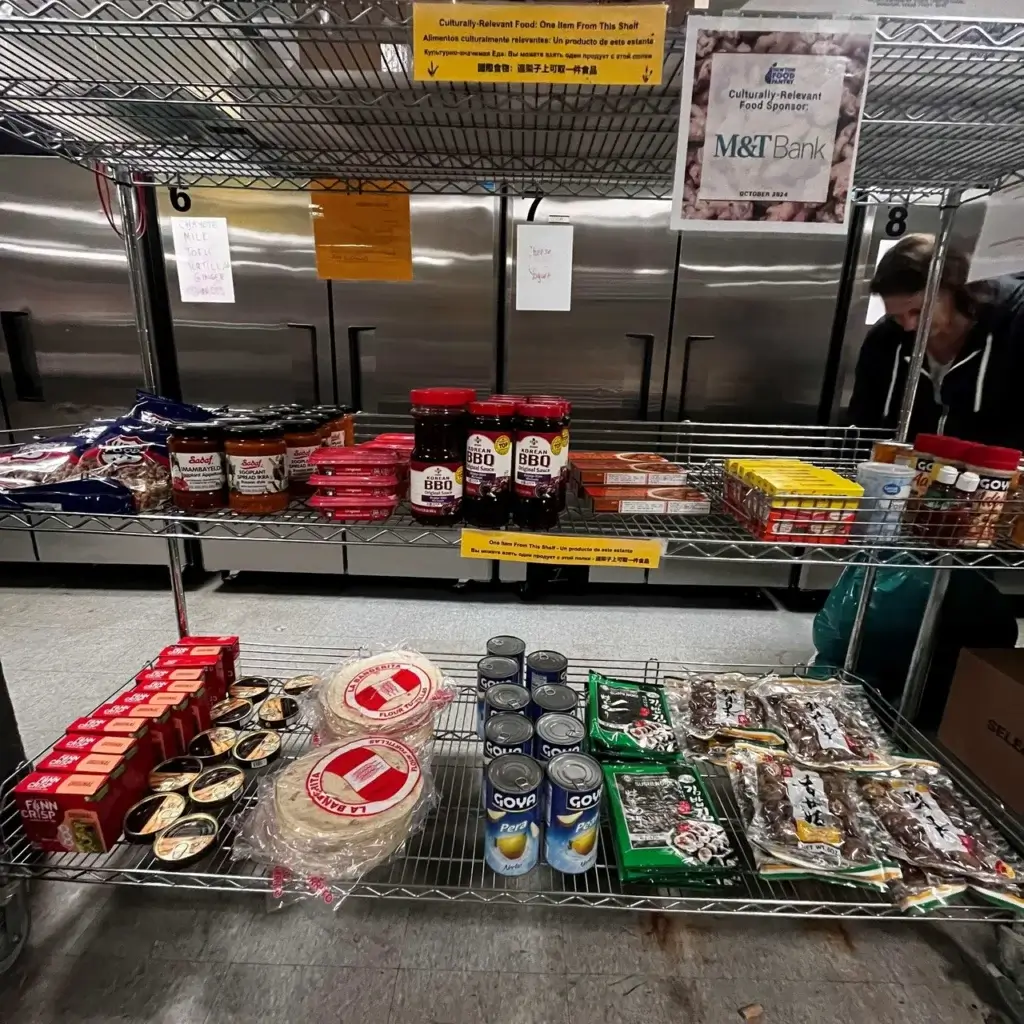
A shelf of culturally relevant foods.Photography courtesy of Newton Food Pantry.
Michelle Scott, the communications and development manager for the Wood Buffalo Food Bank, recalls the lightbulb moment that cemented the importance of having culturally relevant food available for their clients. A gentleman from North Africa was given a generic food hamper and he had to ask what the dried bag of pasta was, and what to do with it. “How unfair is it for us,” says Scott, “to say we are doing things to feed everyone in the community but yet people we are feeding don’t know what they are eating.”
The Wood Buffalo Food Bank, in Fort McMurray, Alberta, fed 15,000 clients in 2021/22. According to Scott, the region is a hub for newcomers to Canada, and she estimates that at least half of the food bank’s clients are unfamiliar with Western food.
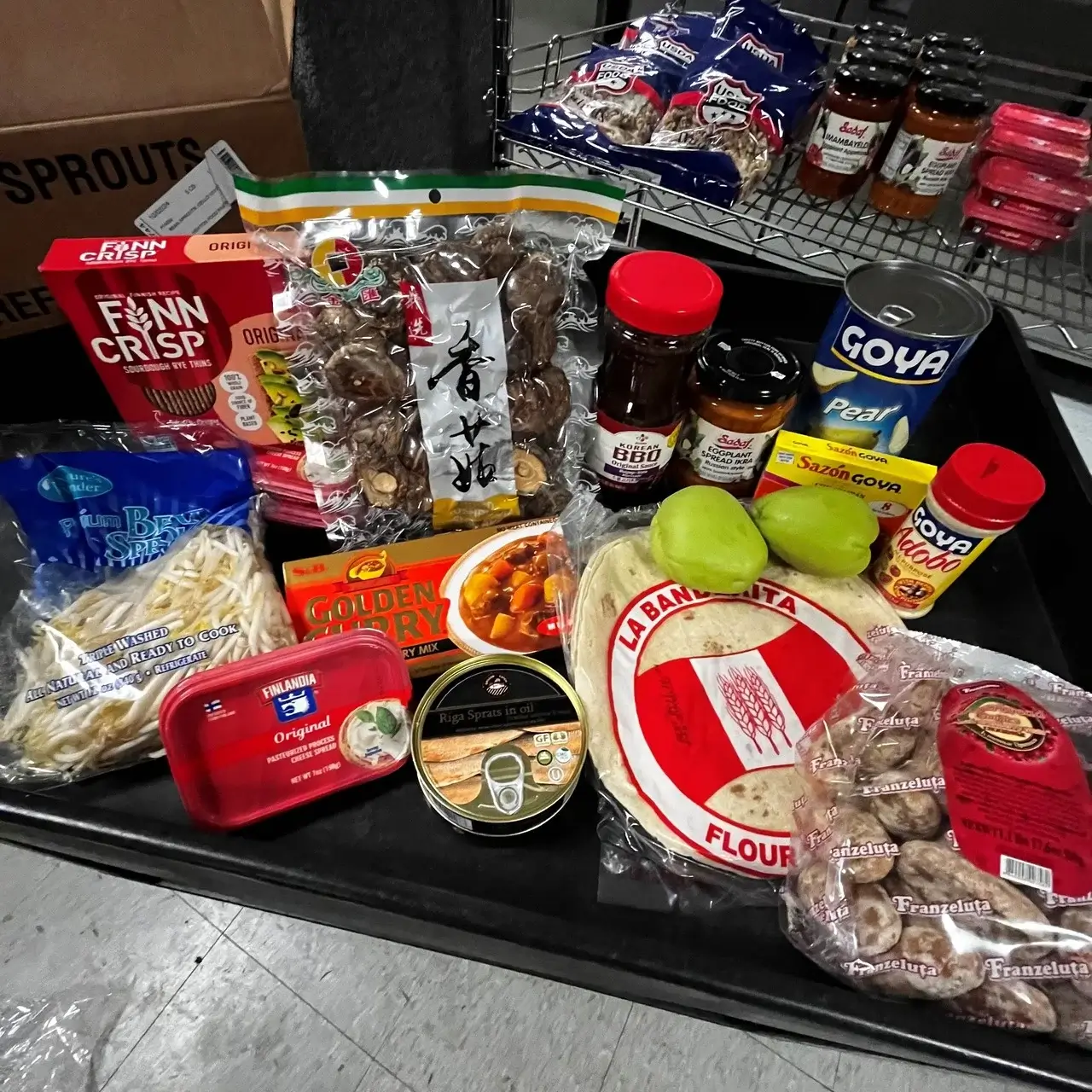
Scott’s realization underscores a significant challenge faced by food banks and pantries across North America: Food is more than just fuel for the body. It carries deep significance that connects individuals to their beliefs and heritage. Food banks, though, are non-profit entities and, like the rest of us, are challenged by the high cost of food. This often means that they buy calorie-rich inexpensive products: canned soups, tinned fish, or dried pasta. But, these foods are not always the only foods people want.
TAKE ACTION
Donate to a food bank through Feeding America.
Feedback received by the the Ottawa Food Bank from a pilot project conducted between 2019 and 2020 indicated a desire for ethnocultural vegetables, such as okra, a traditional staple in African diets, to be available at food banks. Now, the food bank grows okra on its farm.
Similar data was revealed in a report by the Food Bank of the Rockies, which found that individuals visiting food pantries that don’t offer cultural food preferences often feel stigmatized, unwelcome and unwilling to return.
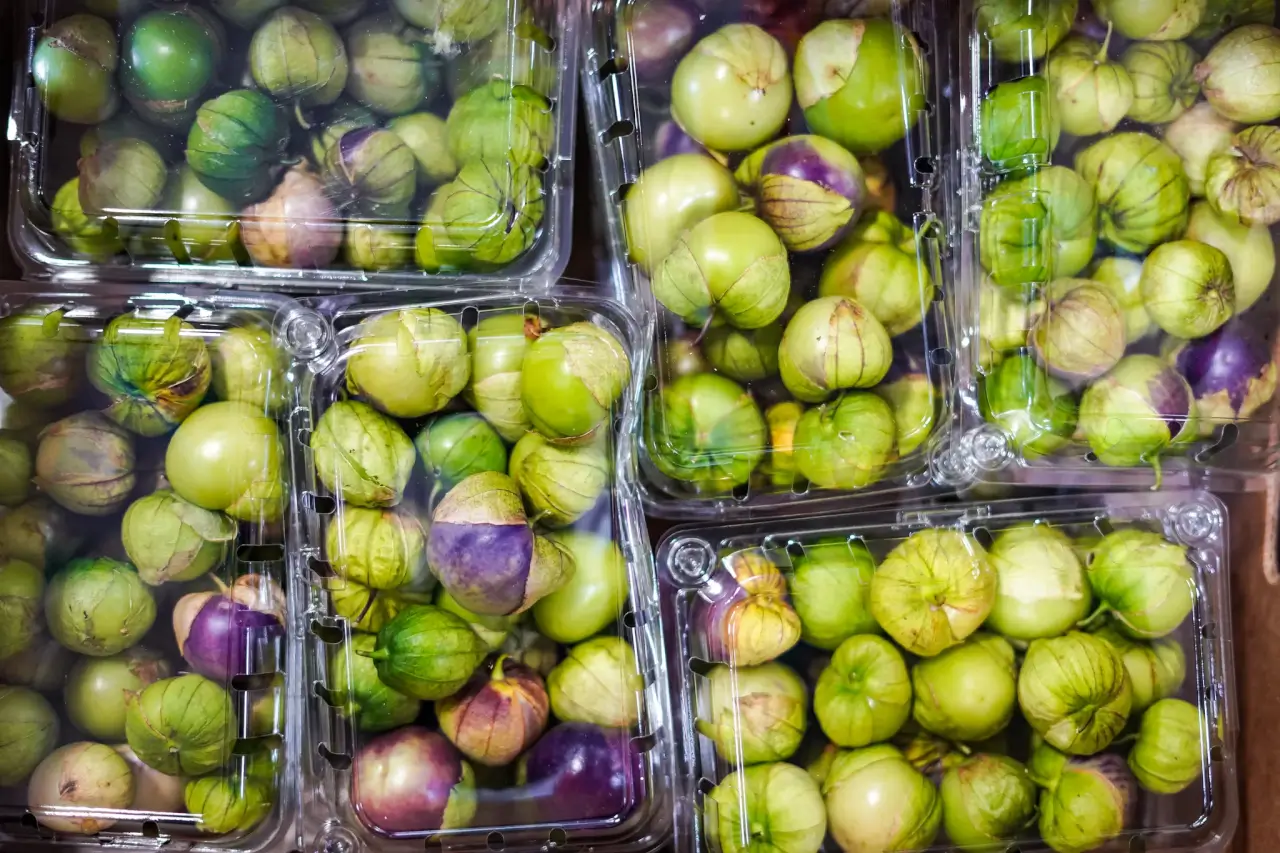
Recognizing the importance of culturally relevant food, Dan Edwards, executive director of the Wood Buffalo Food Bank, shared how it has always tried to incorporate specific items into its hampers. “We’ve made sure to add supplies for Bannock, a traditional Indigenous food, when it’s within our budget and capacity,” says Edwards. Items such as corn flour, Halal meat, lentils and spices are now added to food hampers if requested.
In Newton, Massachusetts, the Newton Food Pantry (NFP) started offering culturally relevant foods during the early days of the pandemic. “We offered things like celery, garlic, ginger, tofu, and Russian cheese,” says Sindy Wayne, board president of the food bank.
Flash forward to 2024: Client registration forms and intake reflect a significant percentage of food pantry clients as Russian/Ukrainian, Chinese (Mandarin/Cantonese speaking), and Hispanic/Latino (Spanish speaking). Each month, the NFP receives funding from corporate sponsors for 100 percent of the purchase of ethnically appropriate food.
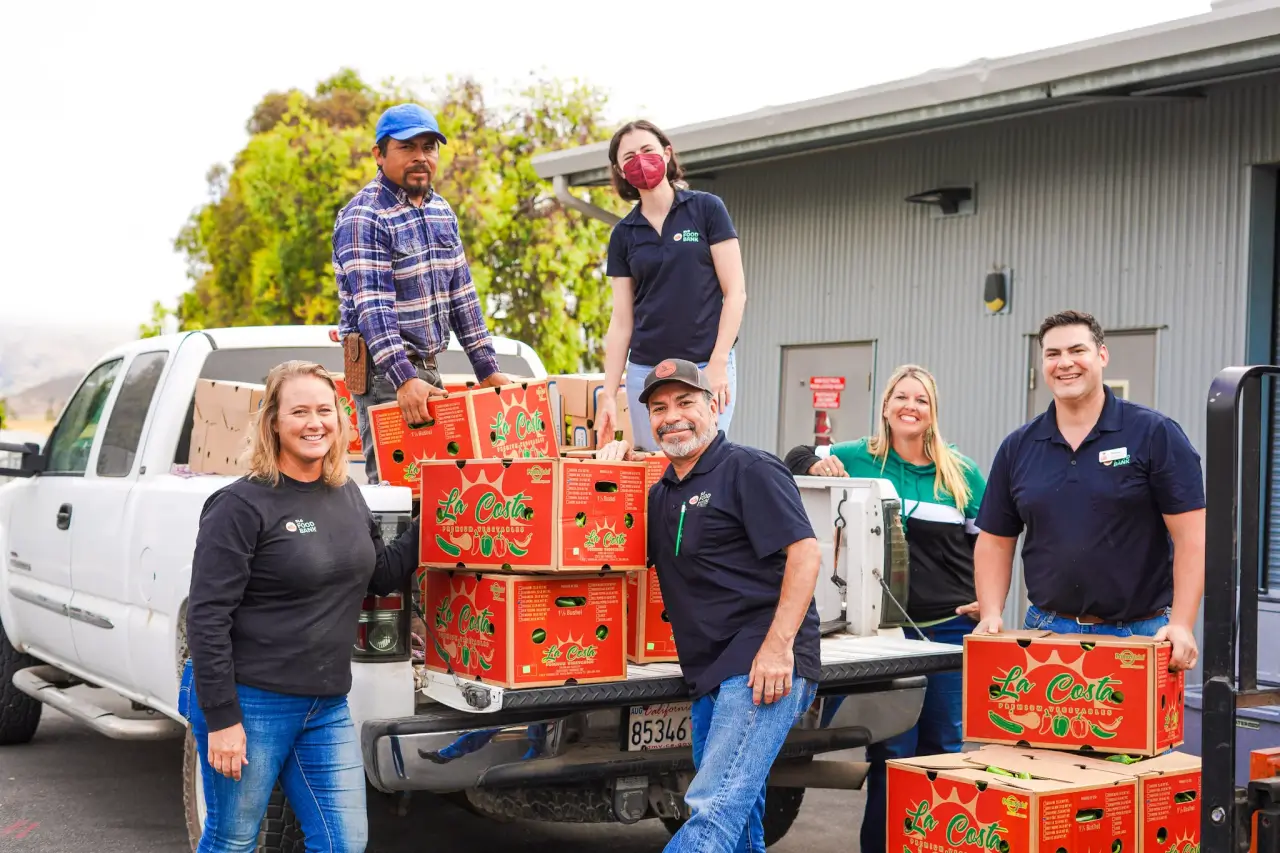
“Our hope is that, by offering culturally relevant food, our clients know that we see them beyond their need for food,” says Denise Daniels, pantry manager at the Newton Food Pantry. “In their time of need, we hope they will create familiarity and a sense of home through their meals.” Part of why clients return to the food bank is that it supplies food items with which they are familiar and like.
One of those returning clients, Daniels recalls, was a woman from Guatemala who noticed that the pantry was stocking a cassava-based cracker. Excited to find an item she was familiar with from her home country, she has returned multiple times to the pantry. The pantry also stocks buckwheat flour and eggplant spread for recently immigrated Russian/Ukrainian clients.
Feeding America reports that of the 47 million people in 2023 who experienced food insecurity, 14 million self-identified as Latino, and more than nine million Black Americans could not access enough food to lead healthy active lives. In Canada, Statistics Canada reports that 28.6 percent of Canada’s Indigenous population 15 years old and older (excluding those living on reserve and in Canada’s three northern territories) experienced food insecurity at some point in 2022.
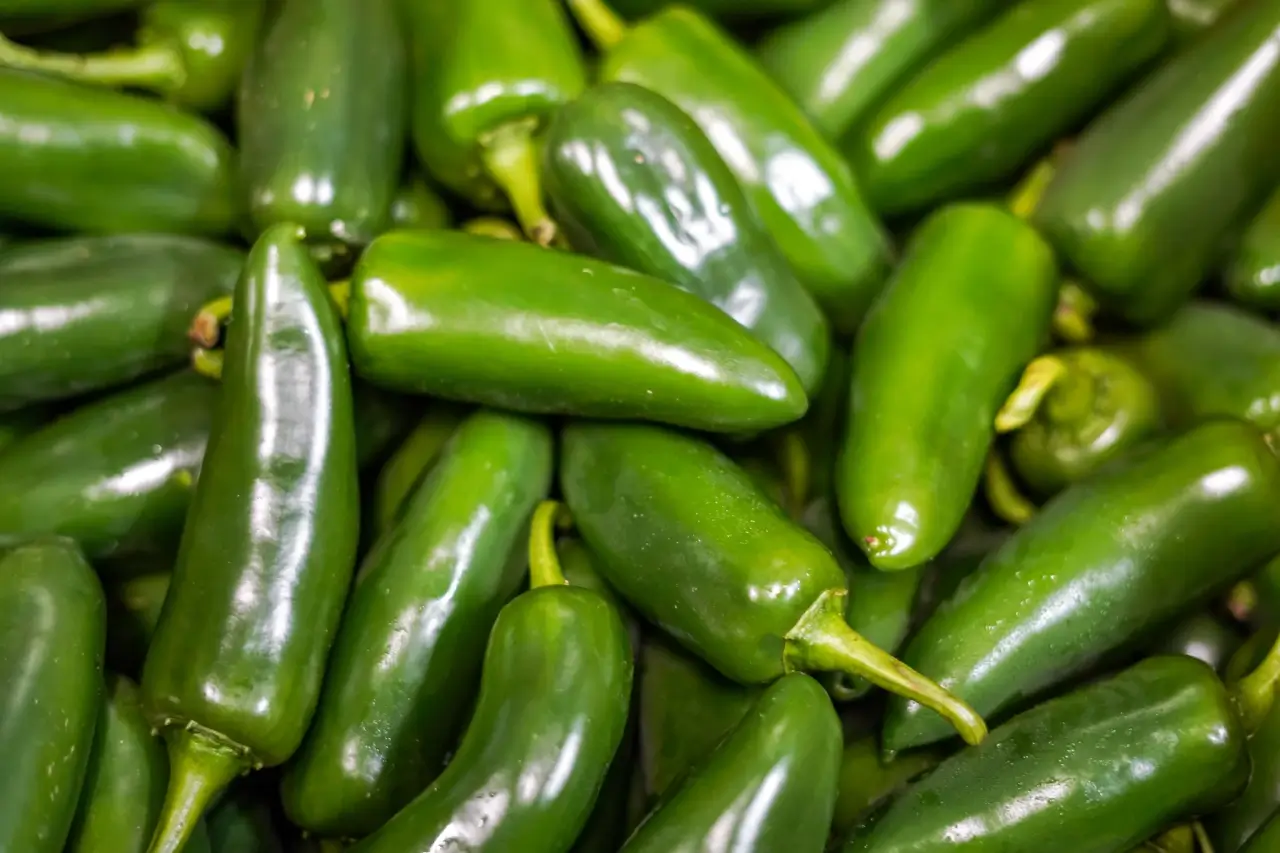
“There are so many different cultures throughout the United States,” says Molly Kern, chief executive officer of the SLO Food Bank in San Luis Obispo County, California. “What mattered most to us was listening to our community and understanding what their needs were.” Staff at the food bank spoke with nearly 350 community members, finding out what challenges they had accessing food, and, most importantly, what role food plays in their lives. The feedback they received was incorporated into the food bank’s 2023-2028 strategic plan.
LEARN MORE
Learn more about the importance of culturally relevant food.
“Regardless of cultural background, a big trend was looking for fresh fruits and vegetables,” says Kern. In San Luis Obispo county, the population is slightly over 280,000. Between 2010 and 2022, the Hispanic/Latino community grew 3.3 percent to become almost a quarter of the area’s overall population at 24.1 percent. Dried beans, fresh chilis, onions, and tomatillos, as well as fresh tortillas, are items familiar to Latino traditions and rank high on the list of foods that are available on food pantry shelves.
“We measure satisfaction by how fast things fly off our shelves,” says Kern. “And when people know you are listening to them and caring for them, and working to improve,it builds trust.”
Follow us
This work is licensed under a Creative Commons Attribution-NoDerivatives 4.0 International License.
Want to republish a Modern Farmer story?
We are happy for Modern Farmer stories to be shared, and encourage you to republish our articles for your audience. When doing so, we ask that you follow these guidelines:
Please credit us and our writers
For the author byline, please use “Author Name, Modern Farmer.” At the top of our stories, if on the web, please include this text and link: “This story was originally published by Modern Farmer.”
Please make sure to include a link back to either our home page or the article URL.
At the bottom of the story, please include the following text:
“Modern Farmer is a nonprofit initiative dedicated to raising awareness and catalyzing action at the intersection of food, agriculture, and society. Read more at <link>Modern Farmer</link>.”
Use our widget
We’d like to be able to track our stories, so we ask that if you republish our content, you do so using our widget (located on the left hand side of the article). The HTML code has a built-in tracker that tells us the data and domain where the story was published, as well as view counts.
Check the image requirements
It’s your responsibility to confirm you're licensed to republish images in our articles. Some images, such as those from commercial providers, don't allow their images to be republished without permission or payment. Copyright terms are generally listed in the image caption and attribution. You are welcome to omit our images or substitute with your own. Charts and interactive graphics follow the same rules.
Don’t change too much. Or, ask us first.
Articles must be republished in their entirety. It’s okay to change references to time (“today” to “yesterday”) or location (“Iowa City, IA” to “here”). But please keep everything else the same.
If you feel strongly that a more material edit needs to be made, get in touch with us at [email protected]. We’re happy to discuss it with the original author, but we must have prior approval for changes before publication.
Special cases
Extracts. You may run the first few lines or paragraphs of the article and then say: “Read the full article at Modern Farmer” with a link back to the original article.
Quotes. You may quote authors provided you include a link back to the article URL.
Translations. These require writer approval. To inquire about translation of a Modern Farmer article, contact us at [email protected]
Signed consent / copyright release forms. These are not required, provided you are following these guidelines.
Print. Articles can be republished in print under these same rules, with the exception that you do not need to include the links.
Tag us
When sharing the story on social media, please tag us using the following: - Twitter (@ModFarm) - Facebook (@ModernFarmerMedia) - Instagram (@modfarm)
Use our content respectfully
Modern Farmer is a nonprofit and as such we share our content for free and in good faith in order to reach new audiences. Respectfully,
No selling ads against our stories. It’s okay to put our stories on pages with ads.
Don’t republish our material wholesale, or automatically; you need to select stories to be republished individually.
You have no rights to sell, license, syndicate, or otherwise represent yourself as the authorized owner of our material to any third parties. This means that you cannot actively publish or submit our work for syndication to third party platforms or apps like Apple News or Google News. We understand that publishers cannot fully control when certain third parties automatically summarize or crawl content from publishers’ own sites.
Keep in touch
We want to hear from you if you love Modern Farmer content, have a collaboration idea, or anything else to share. As a nonprofit outlet, we work in service of our community and are always open to comments, feedback, and ideas. Contact us at [email protected].by Jennifer Cole, Modern Farmer
November 11, 2024
Modern Farmer Weekly
Solutions Hub
Innovations, ideas and inspiration. Actionable solutions for a resilient food system.
ExploreExplore other topics
Share With Us
We want to hear from Modern Farmer readers who have thoughtful commentary, actionable solutions, or helpful ideas to share.
SubmitNecessary cookies are absolutely essential for the website to function properly. This category only includes cookies that ensures basic functionalities and security features of the website. These cookies do not store any personal information.
Any cookies that may not be particularly necessary for the website to function and are used specifically to collect user personal data via analytics, ads, other embedded contents are termed as non-necessary cookies.